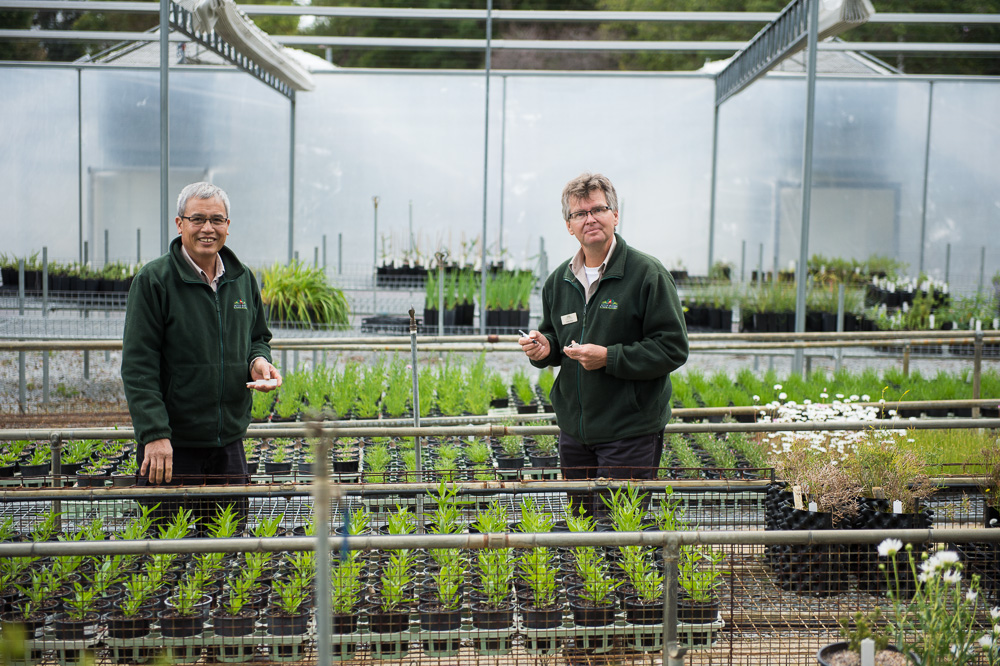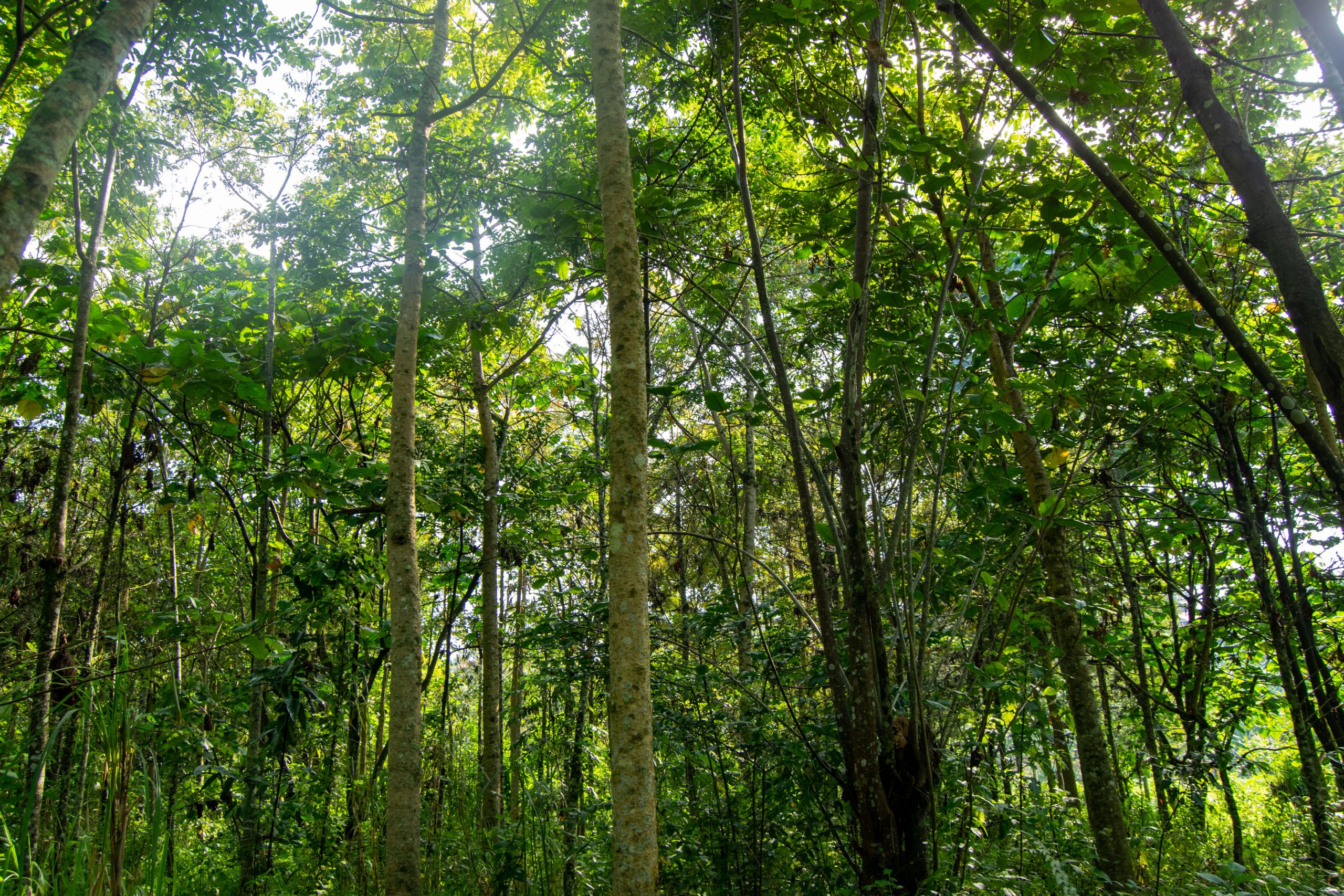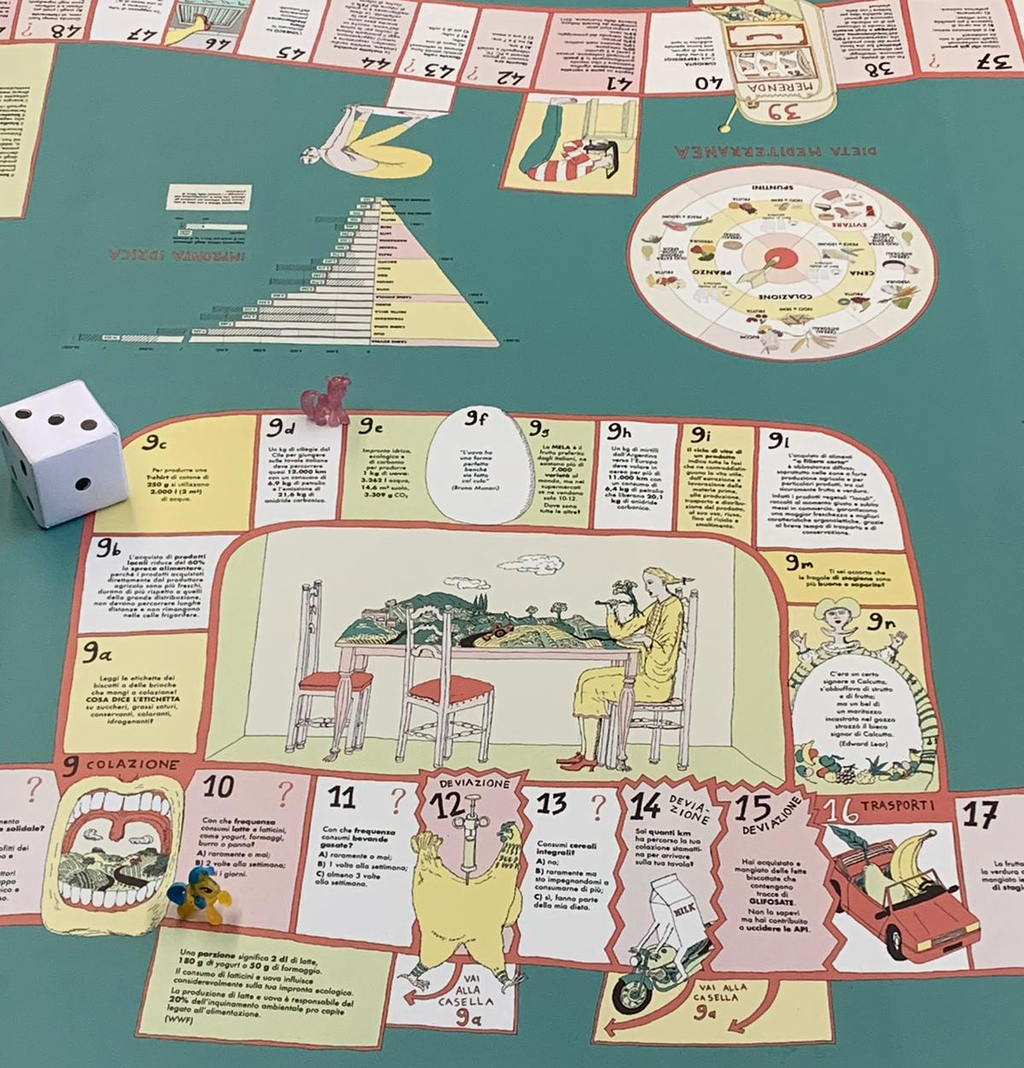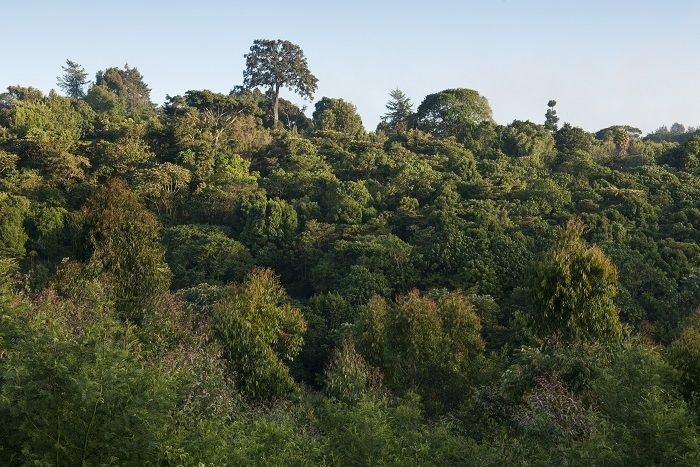Ecological Restoration Alliance of Botanic Gardens
Connect People | Share Knowledge | Restore Ecosystems | Enhance Biodiversity
The Ecological Restoration Alliance of Botanic Gardens (ERA) was established in 2012
It is a consortium of botanic gardens from around the world who are actively engaged in ecological restoration. ERA is coordinated by BGCI. Members of the Alliance have agreed to support efforts to scale up the restoration of damaged, degraded and destroyed ecosystems around the world, contributing to the Sustainable Development Goals and the United Nation Decade on Ecosystem Restoration (2021 – 2030).
ERA was established with the objective of sharing the skills, resources and plant materials of botanic gardens to scale up restoration activities around the world. ERA members have a strong focus on biodiversity. ERA members are building capacity for restoration, including by setting up demonstration sites that restore degraded areas, provide training, and communicate the value of adopting a science-based approach to ecological restoration.

ERA’s mission is:
To mobilize botanic gardens, arboreta and seed banks to carry out science-based ecological restoration by marshalling their expertise, networks, and resources to help achieve the restoration outcomes needed for human well-being and a sustainable future for life on Earth
ERA has four goals:
Goal 1: Develop and implement the Global Biodiversity Standard certification to influence ecological restoration policy and practice at large scale, ensuring there is a strong focus on biodiversity and the use of appropriate plant materials for restoration.
Goal 2: Build ecological restoration capacity in botanic gardens, local communities, academia, industry, government, NGOs and international bodies.
Goal 3: Work with partners to set up, maintain and document a series of long-term sustainable restoration projects in diverse biophysical, political, and cultural contexts around the globe that demonstrate the value of a carefully designed, science-driven approach to sustainable ecological restoration.
Goal 4: Build recognition of the value of involving botanical organisations, botanical expertise and biodiversity in ecological restoration.
Download the full ERA five-year strategy (2021 – 2025) here.
A list of current ERA members is available in the ‘Get Involved’ section above.
ERA News & Events
See MoreCurrent global interest in restoration and tree planting is high.
The UN Decade runs from 2021 – 2030. Large-scale restoration and tree planting pledges have been made by countries around the world. However, often a lack of attention is paid to species selection in planting programmes, and biodiversity and community benefits are often missed.
The botanical community is growing increasingly concerned about this. Since its establishment in 2012, ERA has been working to carry out and build capacity for science-based ecological restoration that incorporates an appropriate mix of species and achieves strong biodiversity outcomes.

ERA works with partners to set up, maintain and document long-term sustainable restoration projects in diverse contexts around the globe that demonstrate the value of a carefully designed, science-driven approach to sustainable ecological restoration. Restoration sites are also used for training. To build capacity further, ERA members have developed training materials and resources aimed at both encouraging other botanic gardens to apply their skills and plant collections to ecological restoration, and enabling other restoration practitioners to adopt a stronger focus on biodiversity.
The work of ERA also aims to build recognition of the value of involving botanical organisations, botanical expertise and biodiversity in ecological restoration. Since ERA was first established, it has led a series of public symposia to showcase the work of members and share best practices for restoration.
- The 1st public symposium took place at Missouri Botanical Gardens, USA in 2014.
- The 2nd public symposium took place in Amman, Jordan, in collaboration with the Royal Botanic Gardens Jordan in 2015.
- The 3rd public symposium took place at Instituto de Ecologia, Xalapa, Mexico in November 2016.
- The 4th public symposium took place in Ontario, hosted by the Royal Botanic Gardens, Canada in 2018.
In 2021, BGCI and the Royal Botanic Gardens, Kew delivered a joint online conference on “Reforestation for Biodiversity, Carbon Capture and Livelihoods”. The conference included three days of online discussion and debate on best practice and policy, underpinned by scientific evidence, to find ways of raising the standard of global reforestation.
The conference led to the development of “The Kew Declaration” which promotes policies and frameworks to ensure protection of intact forests and adoption of effective restoration strategies to protect biodiversity, mitigate climate change and improve livelihoods. The Declaration was signed by over 3,000 global experts and concerned citizens from 114 countries, and was published in Plants, People, Planet.
In 2021, members of ERA and other restoration practitioners, led by the Royal Botanic Gardens, Kew, also co-authored the “Ten golden rules for reforestation to optimize carbon sequestration, biodiversity recovery and livelihood benefits”. The rules have been widely adopted by tree planting organisations around the world.
Building on the success of the ten golden rules paper, the Global Biodiversity Standard is currently being developed by BGCI, ERA and a consortium of partners. The Standard brings together the tried and tested knowledge of the global botanical community, with the expertise of local communities. It is a site-based assessment and certification, that assesses the biodiversity impact of restoration projects. Restoration hubs are being set up to carry out assessments and provide mentoring to support practitioners to improve the biodiversity outcomes of their projects.
Supporting the development and implementation of the Global Biodiversity Standard is one of the goals of ERA.
Read the full ERA strategy (2021 – 2025) here.
If you are interested in signing up as a member of the Ecological Restoration Alliance of Botanic Gardens, please get in touch.
Our members:
Executive Council members:
- Botanic Gardens Conservation International (BGCI)
- Kings Park and Botanic Garden, Australia
- Missouri Botanical Garden, USA
Members:
- Atlanta Botanical Garden, USA
- Auroville Botanical Gardens, India
- Bartlett Tree Research Laboratories and Arboretum, USA
- Botanical Garden of Rome, Italy
- Brackenhurst Botanic Garden, Kenya
- California Botanic Garden, USA
- Cayes Botanique Garden, Haiti
- Chicago Botanic Garden, USA
- Cornell Botanic Gardens, USA
- Dawes Arboretum, USA
- Denver Botanic Gardens, USA
- Fairchild Tropical Botanical Garden, USA
- Holden Forests and Gardens, USA
- Instituto de Ecología, A.C. “Francisco Javier Clavijero Botanic Garden”, Mexico
- Jardim Botânico Araribá, Brazil
- Jardín Botánico de Cartagena “Guillermo Piñeres”, Colombia
- Jardín Botánico de la Ciudad de Buenos Aires “Carlos Thays”, Argentina
- Jardin Botanico de la Universidad Autonoma de Puebla, Mexico
- Jardín Botanico Horco Molle, Argentina
- Jardín Botanico Padre Julio Marrero, Ecuador
- Jardín Botánico Universidad de Talca, Chile
- Jardin Botanico Regional Carmen, Mexico
- Jardin Botanico Regional de Cadereyta, Ing. Manuel Gonzalez de Cosio, Mexico
- Jardin Ethnobotanique Kivu, The Democratic Republic of the Congo
- Kadoorie Farm and Botanic Garden, Hong Kong
- Kirstenbosch National Botanical Garden, South Africa
- Korea National Arboretum, Korea
- Leon Levy Native Plant Preserve, The Bahamas
- Longwood Gardens, USA
- Meise Botanic Garden, Belgium
- National Tropical Botanical Garden, USA
- New York Botanical Garden, USA
- Paignton Zoo Environmental Park, UK
- Rio de Janeiro Botanic Garden, Brazil
- Royal Botanic Garden Edinburgh, UK
- Royal Botanical Gardens, Canada
- Royal Botanic Garden, Jordan
- Royal Botanic Gardens Kew, UK
- Royal Botanic Garden Sydney, Australia
- South China Botanical Garden, China
- The Eden Project, UK
- The Morton Arboretum, USA
- Tooro Botanical Garden, Uganda
- University of Oxford Botanic Garden and Harcourt Arboretum, UK
- Vibrant Botanical Village of Ewe-Adakplame Relic Forest, Benin
- Xishuangbanna Tropical Botanical Garden, China
The Ecological Restoration Alliance of Botanic Gardens is coordinated by BGCI.
A number of tools and key references on restoration and botanic gardens are provided below.
Further information on ecosystem restoration is also available from the toolkit for the Global Strategy for Plant Conservation. Relevant GSPC targets are Target 4 and Target 8.
Species Recovery Manual
Heywood, V., Shaw, K., Harvey-Brown, Y. and Smith, P. (Eds.). (2018). Botanic Gardens Conservation International, Richmond, United Kingdom.
BGCI and the International Association of Botanic Gardens (IABG) have published a new manual to guide species recovery projects.
Species recovery involves many different disciplines and actors, and responsibility for it at a national level is often unclear, given that it cuts across different ministries and agencies. After various consultations, it was felt by BGCI and IABG that it would be valuable to produce a manual that would clarify the aims and purpose of species recovery, set out the various steps involved, and indicate good practice. This manual is aimed specifically at conservation practitioners but also includes comprehensive bibliographic references, which enable more in-depth reading on the topics covered in this publication. The manual includes chapters and case studies from members of the ERA. It can be downloaded below.
Species Recovery Briefs
With support from the Rufford Foundation, BGCI has produced a series of six concise guidance briefs based on chapters of the Species Recovery Manual. The guidance briefs are designed to be easy to follow and downloadable so they can be taken into the field by restoration practitioners. The briefs are also available in Chinese and can be downloaded below.
Forest Restoration Learning Modules
BGCI has created a suite of e-learning modules on restoring forests. There are three modules in the series, which explore planning forest restoration and how to select and source appropriate native species for restoration. They are available in English, French, Spanish and Swahili and can be downloaded below.
GlobalTreeSearch Database
BGCI’s GlobalTreeSearch database, which provides a list of all of the world’s tree species with country-level distribution information. This unique resource provides a tool to help forest restoration practitioners around the world select appropriate species for restoration:
Restoring Tropical Forests: A Practical Guide
Elliot, S., Blakesley, D. and Hardwick, K. (2013). Royal Botanic Gardens Kew, Richmond, UK.
Restoring Tropical Forests is a user-friendly and globally relevant practical guide to restoring forests throughout the tropics. Based on the concepts, knowledge and innovative techniques developed at Chiang Mai University’s Forest Restoration Research Unit, this book will enable substantial improvements in existing forest restoration projects and provide a key resource to enable new ones.
The book covers the general concepts of tropical forest dynamics and regeneration that are relevant to the practice of effective tropical forest restoration. This is followed by proven restoration techniques and case studies of their successful application, and research methods to refine such techniques and adapt them to local ecological and socio-economic situations.
344 pages, 160 colour photos, 100 line drawings and 14 maps. Paperback.
NB. French and Spanish editions are also available
ISBN: 9781842464427
Available for purchase from Kew Books
Or browse the full pdfs in English, French and Spanish here.
Integrated conservation of tree species by botanic gardens: a reference manual
Oldfield, S. and Newton, A.C. (2012). Botanic Gardens Conservation International, Richmond, UK
This reference manual has been developed to support the integrated conservation of threatened tree species by botanic gardens and arboreta. It is aimed at the staff and associates of the world’s botanic gardens, and is designed to help the development, planning and implementation of conservation activities focusing on tree species.
This manual builds on A handbook for botanic gardens on the reintroduction of plants to the wild published by BGCI in 1995 (Akeroyd and Wyse Jackson, 1995) and reflects the increasing imperative to restore and conserve damaged ecosystems. It draws on both the scientific literature and on practical experiences gained in tree conservation projects from around the world.
The manual first briefly considers why tree species should be conserved and restored, and how integrated approaches to conservation can be developed. A step-by-step guide is then provided to support the design and practical implementation of integrated conservation approaches.
While this manual can only serve as a brief introduction to what is a large and complex subject, it is hoped that it will both facilitate and encourage botanic gardens and land management agencies to develop integrated conservation activities focusing on tree species.
ISBN 978-1-905164-44-8
Copies can be requested and downloaded from here,
A Spanish version can also be found here.
Our Once and Future Planet
Paddy Woodworth (2013)
In this multifaceted volume, Woodworth provides an introduction to the relatively new discipline of ecological restoration, which describes and puts into practice means of rejuvenating the natural, and in some cases human, environment of specific locales. Woodworth describes exciting projects from all over the globe, ranging from forest preserve restoration in the Chicago metropolitan area and biodiversity restoration efforts across Western Australia to two separate endeavors in his native Ireland to restore forests and bogs.
It is clear that ecological renewal requires locally specific methodologies and that no project is rapidly accomplished or perhaps ever free from the need for continuing human intervention. Woodworth’s discussions of the various projects illustrate that ecological restoration is as much sociology as hard science, involving deep questions about humanity’s proper role in caring for and participating in local ecologies. Indeed, Woodworth’s penultimate chapter addresses these questions by comparing and evaluating the thought of three leading figures in the movement: James Aronson, Richard Hobbs, and Bill Jordan. Woodworth provides delightful descriptive passages about his travels, which balance the theory-heavy sections.
An important text for scientists and policy makers as well as laypersons with an interest in supporting biodiversity on our planet.
ISBN: 9780226907390
University of Chicago Press
Dry Woodlands in Pakistan’s Punjab Province Piloting Restoration of Unique Yet Vanishing Natural Assets
This report details the work of BGCI and Department of Botany, Sustainable Development Study Centre and Botanic Garden of Government College University Lahore over the last five years to restore dry woodlands in Pakistan.
Various pilot projects are discussed, including work with local communities as well as forestry department representatives to encourage wide participation in restoration. It has also been important to promote the use of indigenous species, exploring the potential for new products and markets.
To find out more about the progress of this project, download the full report below:
UK Germination Toolbox
This is an online database developed by the Royal Botanic Gardens Kew. This toolbox provides successful seed germination conditions for UK native species, mostly from the Royal Botanic Gardens, Kew, Millennium Seed Bank’s collections. It is intended for all those who need to propagate UK native species from seed and is also useful for researchers seeking seed trait data.
Find out more and search the database below:
Restoring degraded ecosystems: Regional and international perspectives, Amman, Jordan, 30th March 2015 – Presentation recordings
The ERA held its second public symposium in Amman, Jordan in Spring of 2015, in collaboration with the Royal Botanic Gardens Jordan. Access recordings of the presentations from the symposium below.
Using photography to capture the process, science and value of ecological restoration
Conservation photographer, Barney Wilczak, has been working with ERA to document the restoration work of member gardens. He has developed a portfolio of photographs which can be made available to BGCI members on request for use in fundraising and promotion of ecological restoration.
More of Barney’s ERA photos can be viewed on his website: http://wilczakphotography.photoshelter.com/
The Morton Arboretum’s Natural Areas Conservation Training Program
Online resources from ERA member, The Morton Arboretum Natural Areas Conservation Training Program, were trialed at an ERA forest restoration training course in Kenya. Find out more below.
Ten Golden Rules for Reforestation
Di Sacco, A., Hardwick, K.A., Blakesley, D., Brancalion, P.H.S., Breman, E., Cecilio Rebola, L., Chomba, S., Dixon, K., Elliott, S., Ruyonga, G., Shaw, K., Smith, P., Smith, R.J. and Antonelli, A. (2021)
Access the full publication below.
Reforestation for Biodiversity, Carbon Capture and Livelihoods Conference
The Royal Botanic Gardens, Kew and Botanic Gardens Conservation International (BGCI) jointly convened three days of online discussion and debate on best practice and policy, underpinned by scientific evidence, to go beyond the headlines and find ways of raising the standard of global reforestation.
Watch the recordings from the BGCI and RBG Kew conference on reforestation below.
Kew Declaration
The aim of the Kew Declaration is to protect biodiversity, mitigate carbon emissions and climate change, and improve livelihoods by promoting a framework and policies that ensure protection of intact forests and adoption of effective restoration strategies that further these three goals.
Read the full publication below.
Directory of Expertise – Ecological Restoration
BGCI’s Directory of Expertise is designed to enable experts within botanic gardens to let other people know about their own skills and knowledge and, if possible, help them to solve a problem or challenge related to botanic gardens or plant conservation. The Directory currently includes 11 areas of expertise – you can apply a filter to display experts in Ecological Restoration.
Share






















